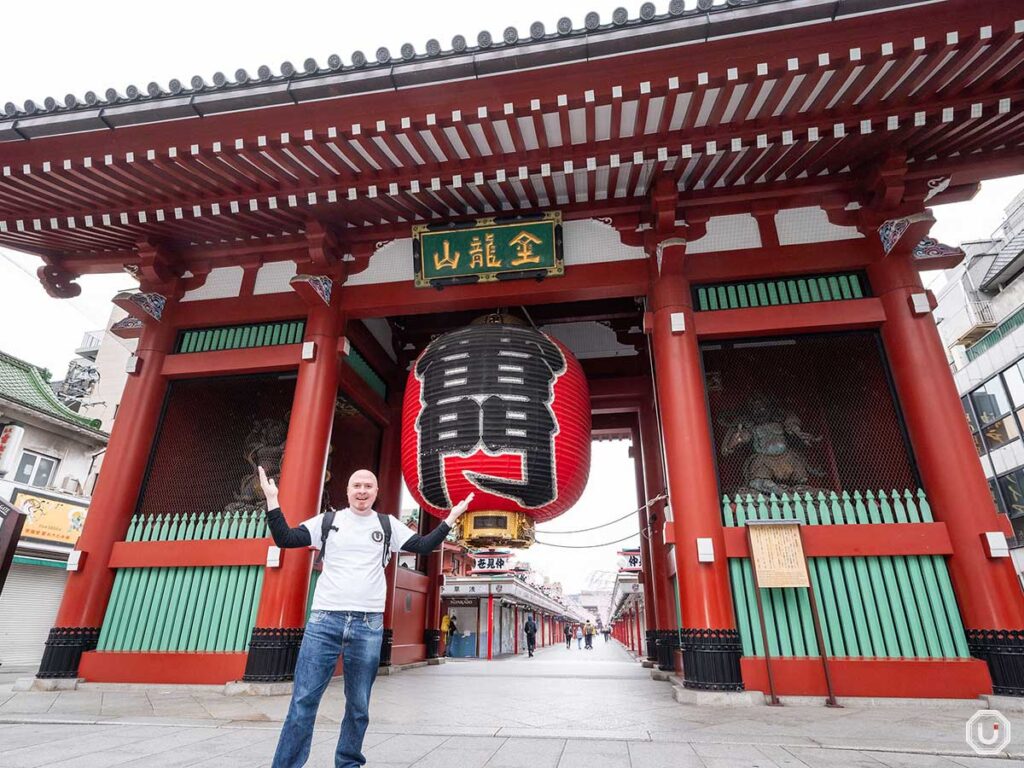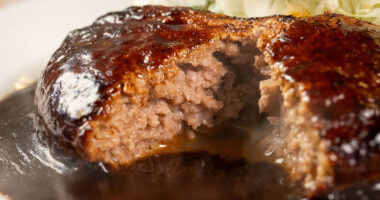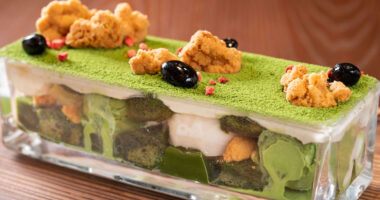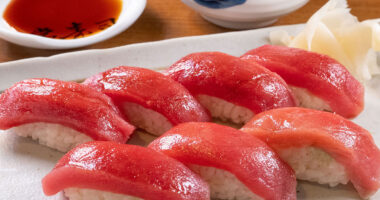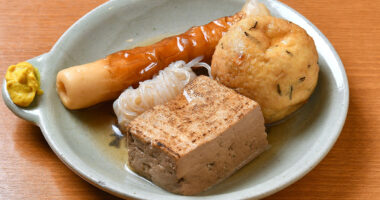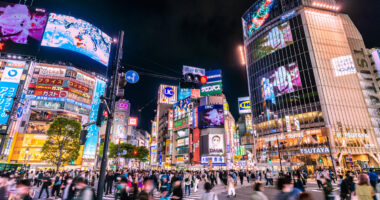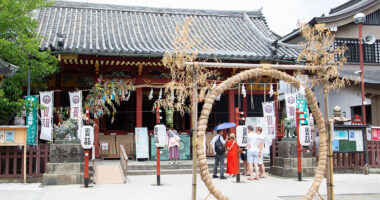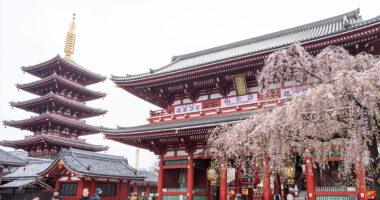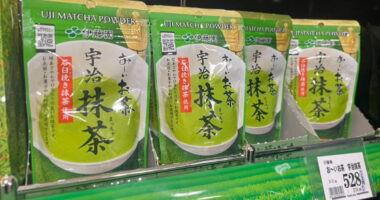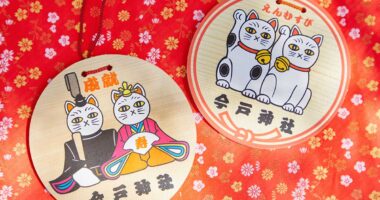Sensō-ji Temple, formally known as Kinryūzan Sensō-ji, is not only a major tourist attraction in Tokyo but is considered one of the most iconic sights representing Japan.
Throughout its long history, Senso-ji has repeatedly suffered damage from fire and earthquakes.
However, each time the local people have joined forces to rebuild and revive it, allowing the temple to stand guard over Asakusa to this day.
The Kaminarimon “Thunder Gate” at Senso-ji’s entrance is a hugely popular photo spot
The Kaminarimon (“Thunder Gate” in Japanese) serves as the temple’s entrance and is an iconic symbol of Asakusa. Although it was once lost in a fire in 1865, the current Kaminarimon was reconstructed in 1960, 95 years later.
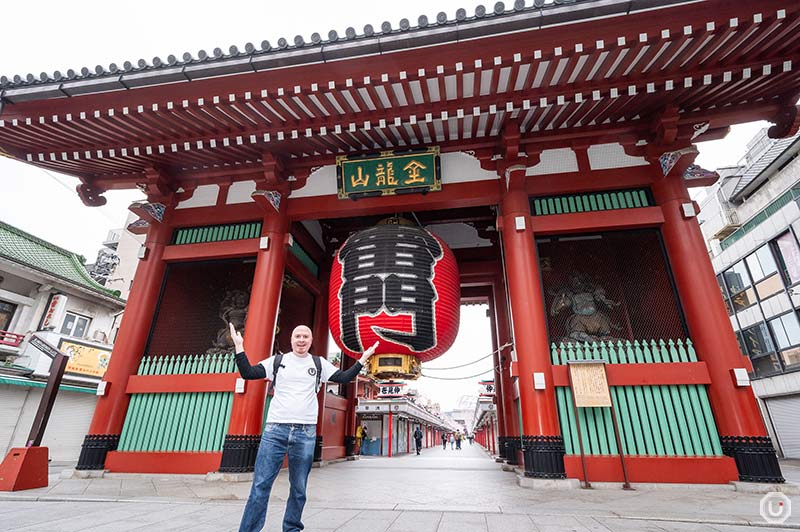
“雷門(風雷神門),” Kaminarimon (Fūraijinmon)
As the gate is a very popular spot for taking commemorative photos, the area is constantly crowded with people. However, between 6-7 in the morning there’s less of a crowd, making it an ideal time for photography!
Approaching the Kaminarimon, you’ll find many other points of interest to photograph.
Two of these are the statues of Fūjin and Raijin, the gods of wind and thunder, respectively. They can be considered the reason behind the gate’s formal name of Fūraijinmon.
To the left is Fujin and to the right is Raijin, their impressive forms viewable up close.
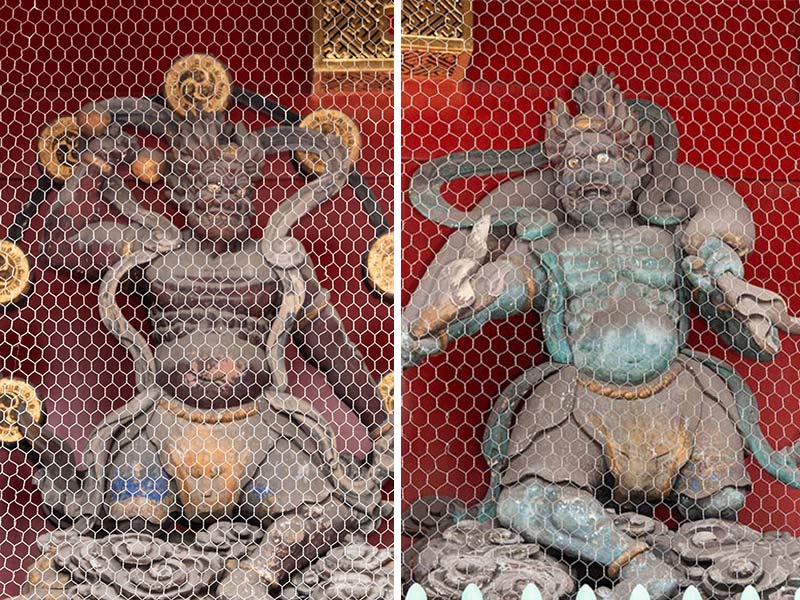
Fujin, the wind god (left); Raijin, the thunder god (right)
A second noteworthy point can be found at the bottom of the large chōchin lantern hanging at the Kaminarimon.
Since the lantern is made of washi paper, it needs to be replaced when it shows signs of wear and tear.
However, the carving of the dragon at the bottom has been passed down unchanged since the first lantern was made.
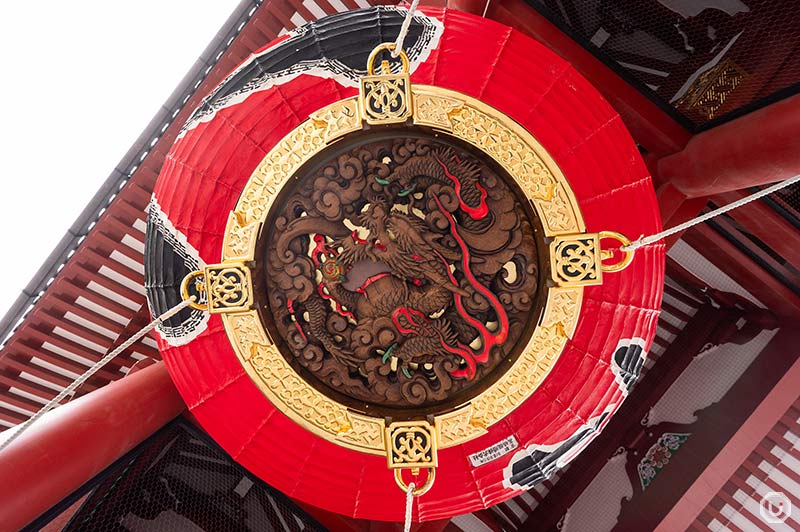
The dragon carving at the bottom of the giant red lantern
The dragon carving, which continues to accompany the lantern, can be considered the guardian deity of Kaminarimon.
When passing through the gate, why not bow and take a peek at the bottom of the lantern?
The Hōzōmon “Treasure-House Gate” welcomes worshippers
Beyond the Kaminarimon lies the Hōzōmon Gate. It was originally called the Niōmon due to the guardian deities (called Nio in Japanese) flanking it. The current name of Hozomon (roughly “Treasure-House Gate” in Japanese) was adopted in 1964.
That current name was given to it because of the sutras and many other cultural assets of historical value that are housed there.
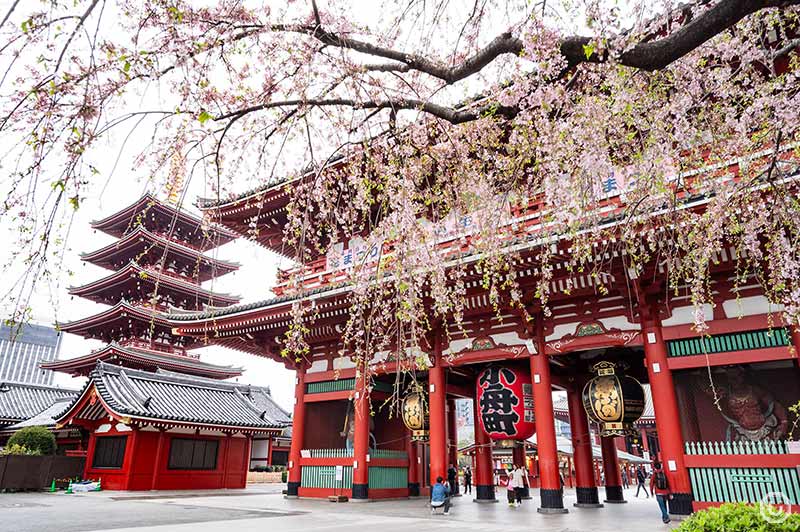
In spring, you can enjoy views of the gate among cherry blossoms
The Hozomon is another popular photo spot that you can enjoy on par with the Kaminarimon, and it is bustling with visitors taking commemorative photos by the large lantern.
Much like the Kaminaimon, getting there early in the morning is recommended for taking pictures!
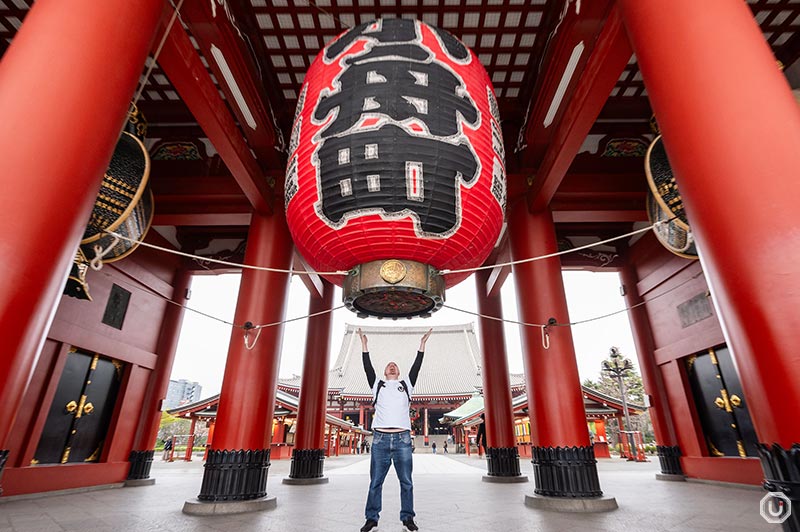
The large lantern hanging from the Hozomon
Purify yourself at the water basin before praying
Beyond the Hozomon, finally, is the main hall!
At Japanese shrines and temples, there is a custom of purifying oneself before praying called temizu or chōzu, both of which mean “hand water,” at a water basin.
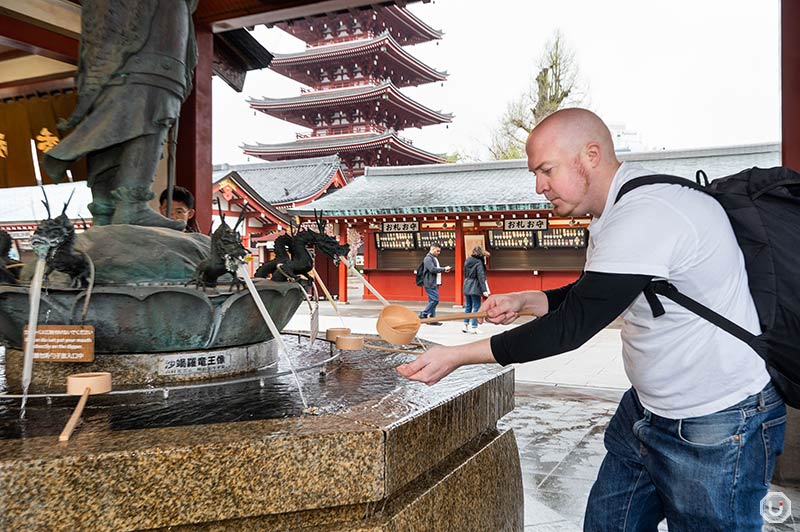
The water basin for purification at Senso-ji
At Senso-ji, use the hand water basin (known as omizuya) located to the right of the main hall when facing it.
The official Senso-ji website outlines the proper way to use the hand water basin:
Senso-ji Temple
- First, hold the wooden ladle (hishaku) in your right hand and wash your left hand.
- Then switch the ladle to your left hand and wash your right hand.
- Take the ladle back in your right hand, catch some water in your left to rinse your mouth.
*Do not let your mouth actually touch the ladle.- Finally, stand the ladle upright, let water flow down the handle to clean it, and return it to its original position.
The ever-burning incense burner where worshippers offer incense
Beside the main hall, you’ll notice billowing smoke from the ever-burning incense burner known as a jōkōro.
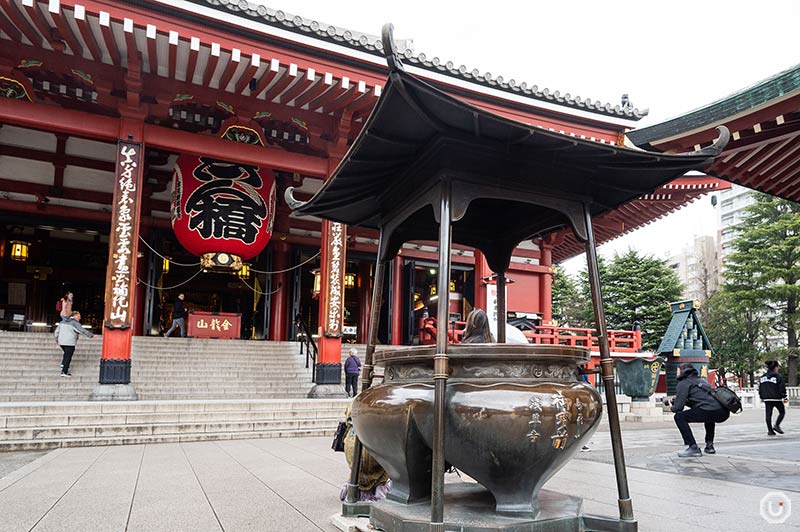
Senso-ji’s jokoro incense burner
These ever-burning incense burners are where those who come to pray offer incense sticks. You’ll commonly see these at shrines and temples across Japan.
There’s also a belief that the smoke from the ever-burning incense burner purifies impurities and cleanses the body. Therefore, it’s common to see worshippers wafting the smoke over their bodies with their hands.
Additionally, the place where you can receive incense is at the incense offering area located to the right side when facing the main hall. You’ll need to submit an offering fee of 100 JPY.
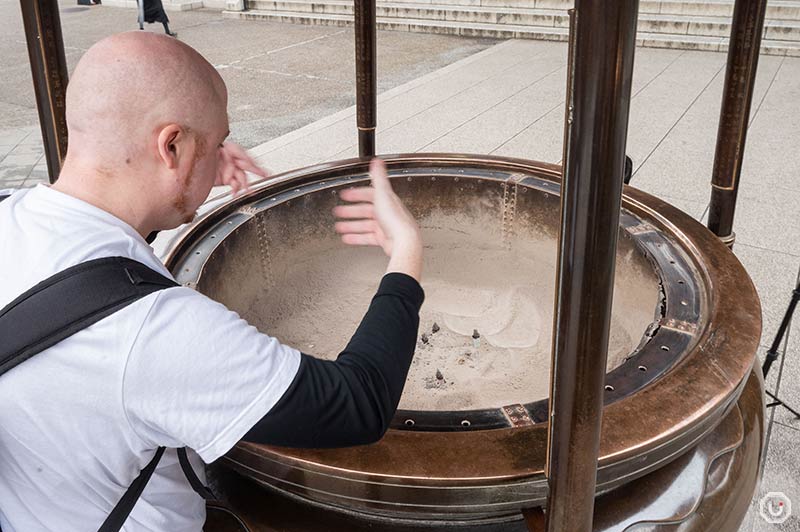
Finally, to the main hall! What should you keep in mind when paying your respects?
After purifying yourself, it’s finally time to pay your respects at the main hall!
At the top of the stairs, there’s a donation box where you can offer money. After offering money, join your hands in prayer and bow once. End with another bow – this is the proper etiquette.
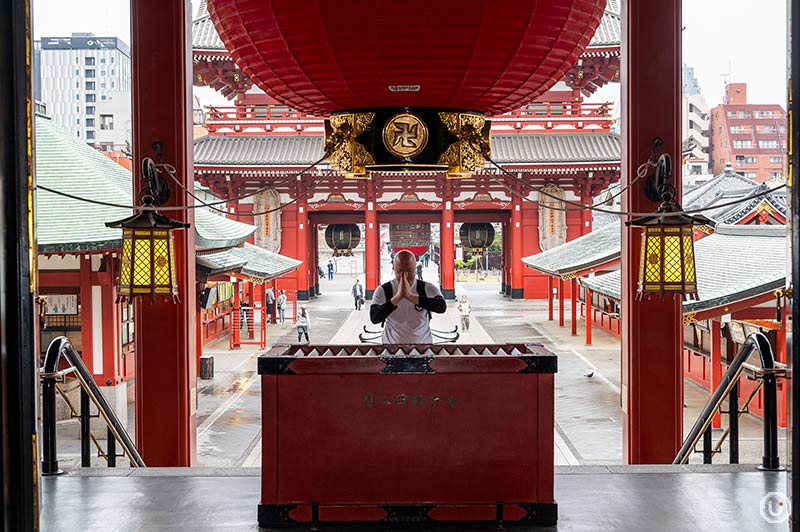
Stepping into the main hall feels like entering a different world.
The current main hall was rebuilt in 1958, its ceilings adorned with three ceiling paintings created at that time.
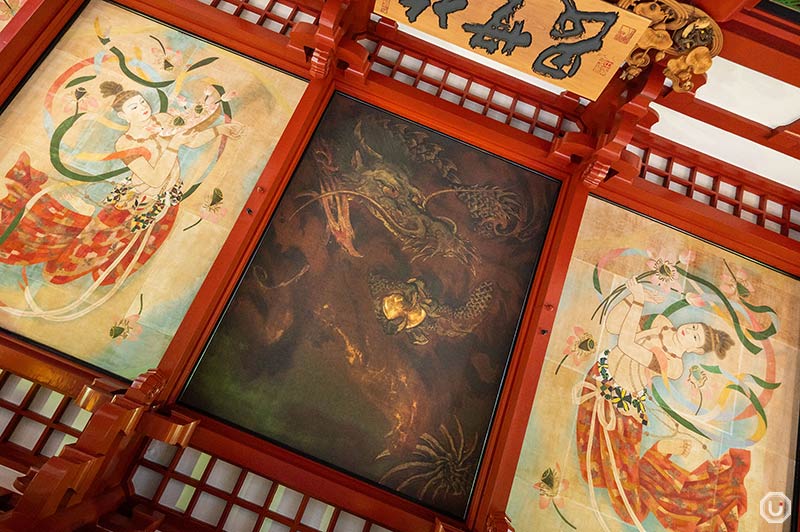
(left & right) Heavenly Figures, Scattering Flowers (Center) Dragon
Inside the main hall, you can receive various omamori, Japanese amulets or charms thought to offer fortune and protection. There are specific ones at Senso-ji that range from household and traffic safety to academic and career success.
There are even omamori designed with the Kaminarimon motif – perfect as commemorative souvenirs or for loved ones.
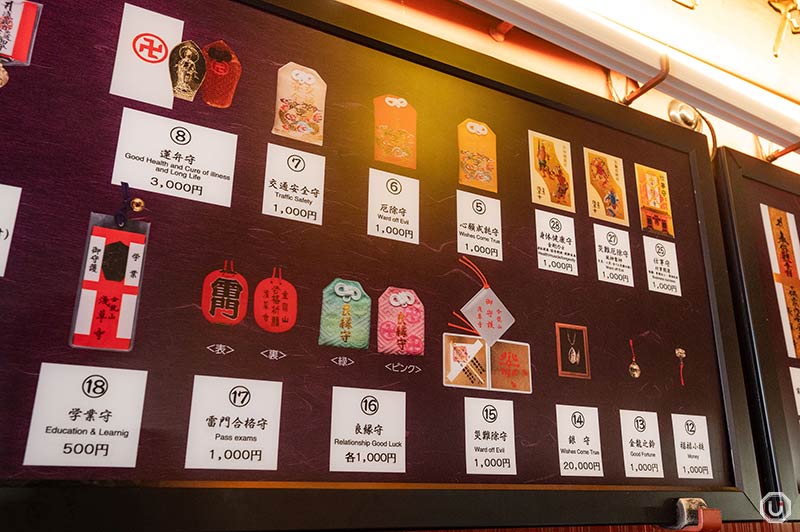
Omamori charms at Senso-ji
After praying, don’t miss out on omikuji fortune slips and goshuin seals!
When visiting Senso-ji Temple, be sure to draw an omikuji fortune slip! Pass through Hazomon Gate and there are omikuji stalls to the left and right.
Omikuji are slips of paper with messages written on them used for divining one’s future fortune.
At Senso-ji, there are seven different fortune levels in descending order of luck: daikichi (great blessing), kichi (blessing), han-kichi (half blessing), shōkichi (small blessing), sue-shōkichi (almost small blessing), sue-kichi (almost blessing), and kyō (curse).
The way to draw an omikuji at Senso-ji
1. Prepare a 100 JPY coin and insert it into the “mikuji” slot indicated.
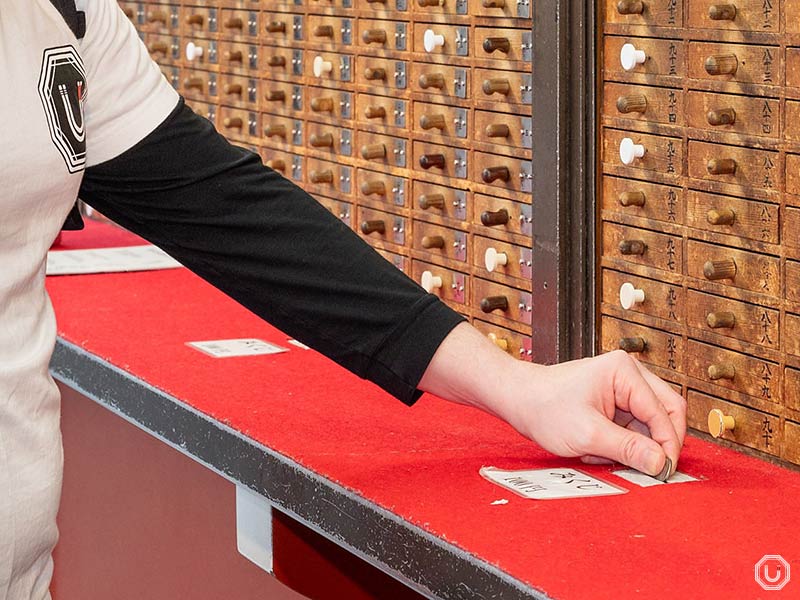
2. Shake the silver cylindrical container and pull out a stick with a kanji number written on it.
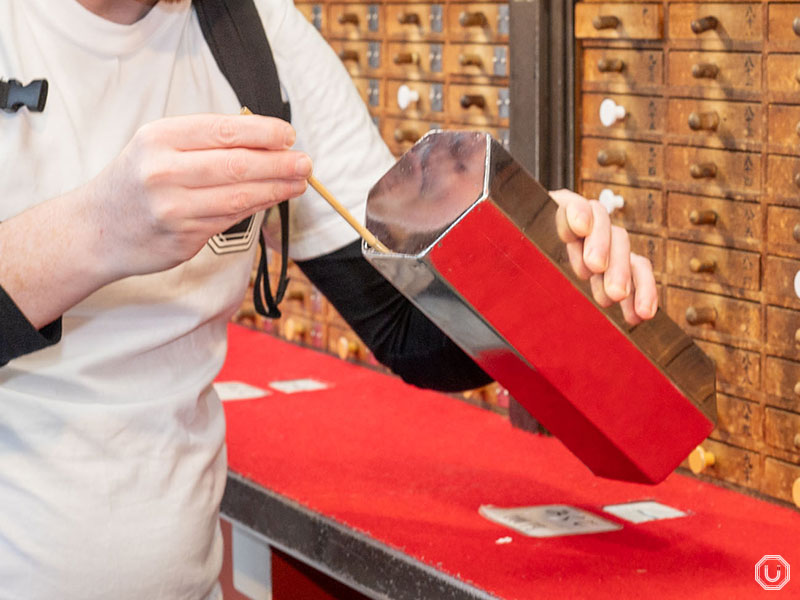
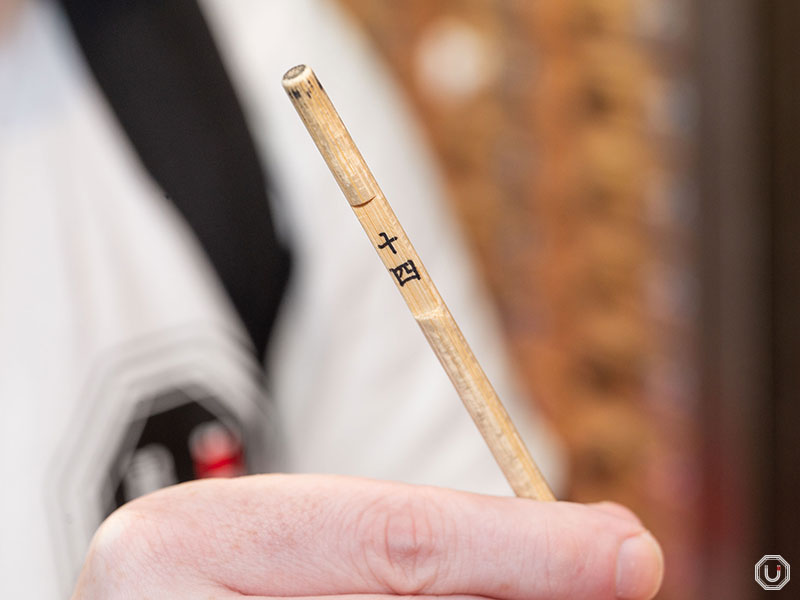
3. Find the drawer with the matching kanji number and take out the omikuji paper inside.
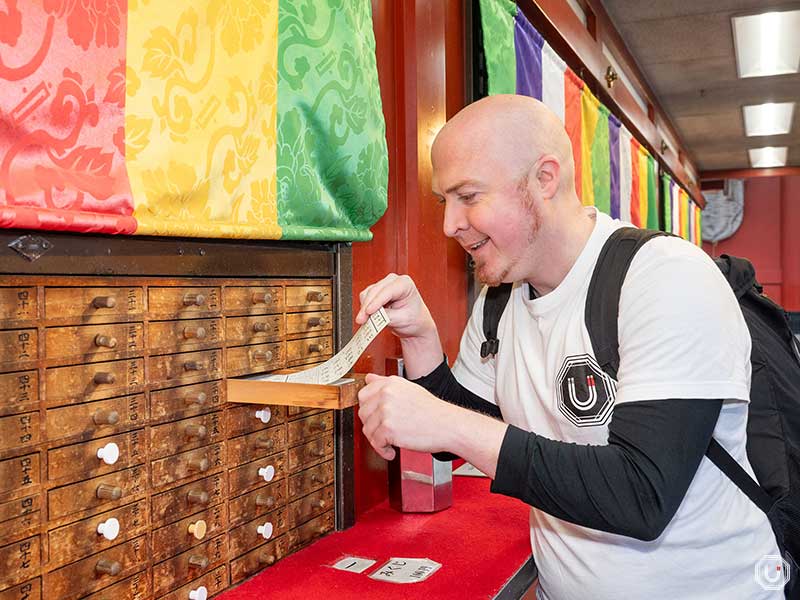
At Senso-ji, fortune slips are written in both Japanese and English, making them easy to understand for international visitors!
If you receive the worst “curse” fortune, be sure to tie it to the omikuji binding rack.
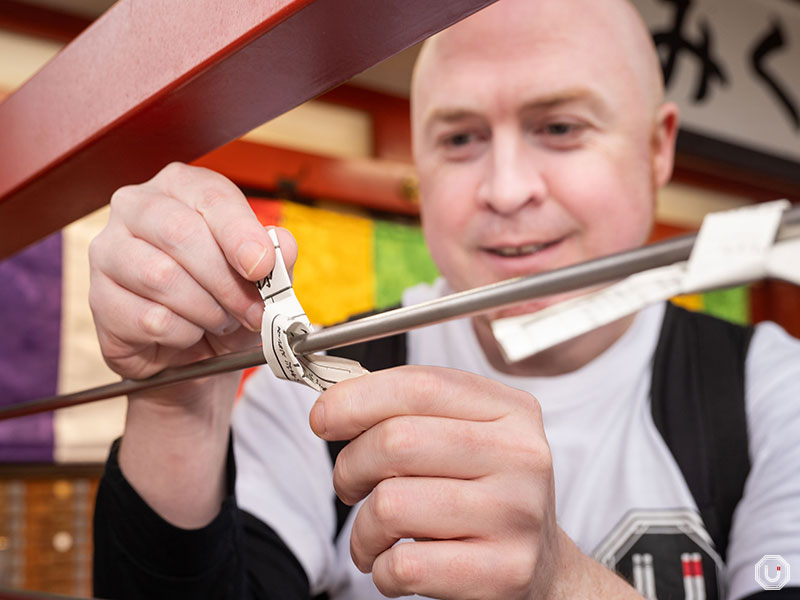
Only curse fortunes should be bound here
You can receive goshuin seals, which serve as proof of your visit, at the Yōgōdō Hall located right next to the main hall.
A goshuin, received as proof of your visit, is considered essentially a connection with the Buddha.
It’s a good idea to have a dedicated goshuinchō (a book for collecting goshuin seals) ready when receiving goshuin.
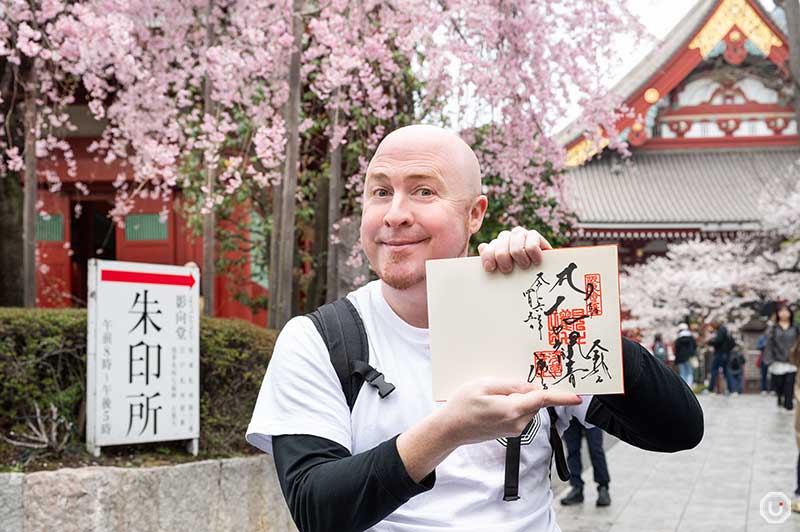
Goshuin 500 JPY
There are various etiquette customs to observe at Japanese shrines and temples, such as passing through torii gates, ritual hand purification, and proper behavior during worship. While respecting the Buddhist deities, be sure to follow these customs so you can experience the depth of Japanese culture.
And may good fortune come to all those who visit Senso-ji!
Temple information
| Name | 浅草寺 Sensō-ji |
|---|---|
| Address | 2-3-1 Asakusa, Taito-ku, Tokyo
|
| Access |
Asakusa Station Short-walk from Exit 3
Asakusa Station 6-minute walk from Exit A1
|
| Phone number | 03-3842-0181 |
| Visiting hours | April-September 6:00-17:00 October-March 6:30-17:00 |
| Sacred items | Available until 17:00 |
| Goshuin | Available until 17:00 |
| Omikuji | Available until 18:00 |
| Admission fee | Free |
| Official website | https://www.senso-ji.jp/ |
| Other information |
|
※The information in this article is current as of April 2024.
